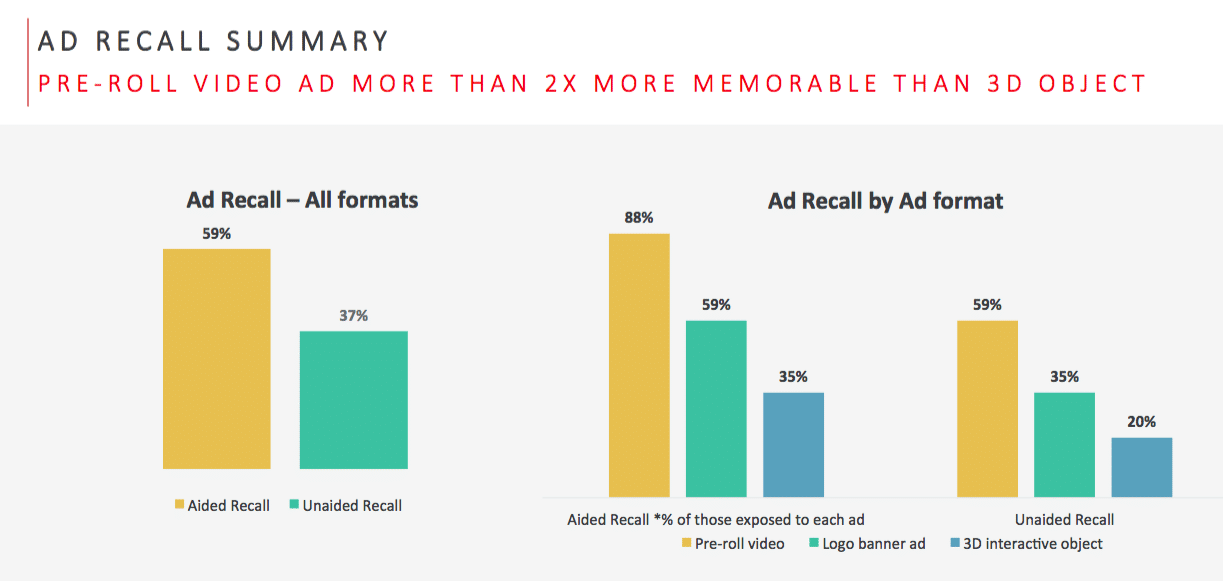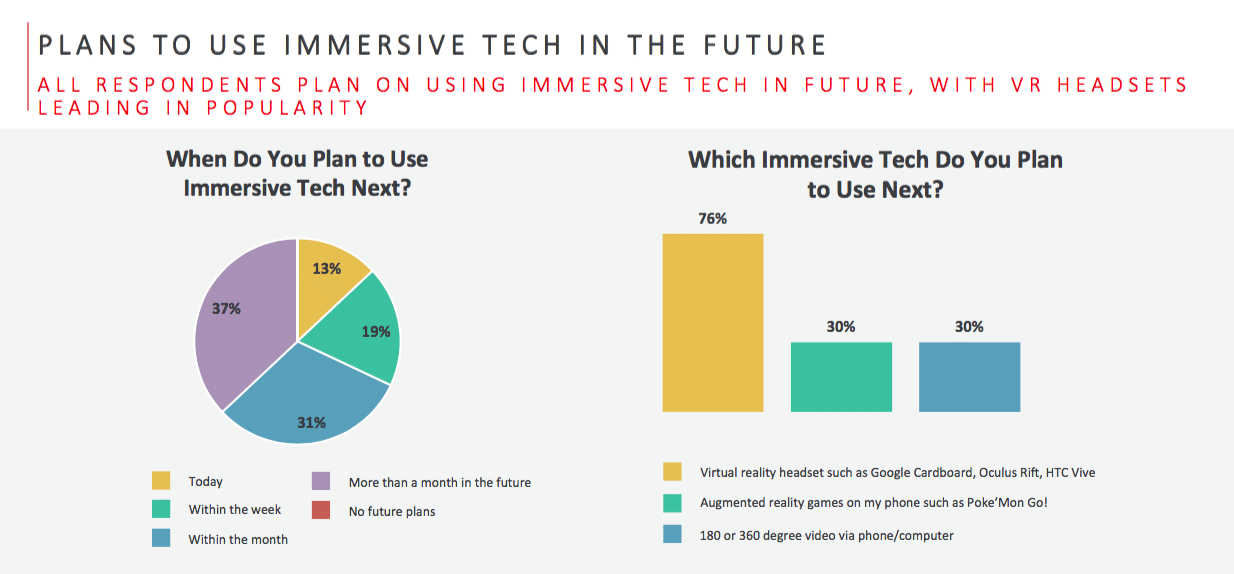Brand marketers are perpetually searching high and low for ways their brands can resonate in advertising efforts, and new research reveals that VR-enhanced ads have the high memorability with gamers that they’re seeking, registering 70-percent aided recall across all ad formats—offering some real insights into brand recall strategy and advertising’s future viability.
The new virtual reality in-game advertising study from video ad innovation firm YuMe, in partnership with global digital agency Isobar, immersive entertainment studio RLTY CHK, and immersive media analytics platform RetinadVR, compares consumer responses to three forms of VR advertising—a pre-roll video ad, brand logos present in-game and 3D branded objects inserted into interactive game play.
The highest levels of brand recall occurred with the pre-roll video ad, which achieved 90-percent aided recall on the day the study was conducted.
As brands continue to identify the most impactful video advertising formats, the report also offers insights about which ad format elicits the strongest emotional response, revealing that pre-roll video within a VR experience is associated with a stronger emotional response (both higher emotional arousal and more positive emotional valence). Generally, stronger emotional response levels make advertising more memorable, as is often evidenced by correlating with higher recall.
“We believe our study indicates that VR advertising is highly memorable in any format. It’s encouraging to see that a video ad, the most familiar and high-performing digital format, also delivers the highest rate of ad recall in the VR world,” said Mireya Arteaga, research lead at YuMe, in a news release. “We believe immersive advertising is on the rise. Its ability to deliver a compelling branded-content message that is interactive, engaging and offers consumers the ability to own their ad experience is very attractive to today’s advertisers.”
Key takeaways from the study include:
VR advertising in-game is memorable across all ad formats studied
- 70 percent of respondents reported same-day aided recall
- 26 percent of respondents reported seeing a brand in a virtual world is more memorable than a digital video ad
VR advertising in-game is less intrusive and well-integrated
- 74 percent of respondents reported the virtual ad experience less intrusive than normal digital advertising
- 69 percent of respondents reported the ad was well-integrated
Brand recall in VR gaming is high across all ad formats, but only video maintains high ad recall the next day
Logos only:
- Aided same day 67 percent
- Aided next day 50 percent
Pre-roll only:
- Aided same day 90 percent
- Aided next day 86 percent
3D object only:
- Aided same day 50 percent
- Aided next day 25 percent
Multiplayer VR games deliver high emotional engagement—presenting advertising opportunities and challenges
- Skin conductance measures show a level of emotional arousal three to four times higher than the average for 2D video content.
- This presents both an opportunity and challenge for VR advertisers. To the degree that high emotional engagement can be transferred to the advertised brand, there is strong opportunity to deliver a memorable ad with high recall. The marketing challenge is getting the ad unit to be noticed within the context of highly engaging game play.
“We believe the strong emotional engagement of VR gaming provides a great context for placing advertisements,” said Jeremy Pincus, Ph.D., vice president at Isobar, in the release. “We see strong emotional engagement in both the overall experience and during exposure to each of the ad units, as measured through multiple biometric channels, including brain waves, facial muscle contractions, skin conductance, and heart rate changes.”
“By combining our immersive VR game show format with strategically-placed ads, both players and brands can win,” said Nick Robinson, CEO at RLTY CHK, in the release. “VR enables marketers and developers to reimagine brand experiences, and the positive recall metrics show how effective VR can be in engaging audiences.”
“VR and AR, while nascent marketing platforms, can help brands effectively tell a story to their customers, helping them connect with their consumers and keep their name top-of-mind,” added Alexander Haque, CEO of Retinad Analytics, in the release. “This study demonstrates the potential effectiveness of in-game VR advertising and how brands should approach this medium.”
Download the report here. A free webinar on the research findings entitled, “Transforming a Virtual Ad Experience into a Real World Memory,” is scheduled for today (October 24) at 1 pm ET/10 am PT. Register here.
In conducting the VR advertising study, a total of 54 participants based in San Francisco, California were recruited to play “Kiss or Kill,” an immersive VR game show created by RLTY CHK, with CPG advertising included in three formats: video, branded logo in-game insertions and 3D branded objects included in interactive game play. Participants were monitored during game-play by Isobar to collect key emotional response data. Immediately after the game, and again 24 hours later, participants were surveyed by YuMe to measure ad recall and understand consumer response to the various forms of VR advertising they were exposed to. RetinadVR audited and provided input to the survey methodology, study execution, and the data analysis.










